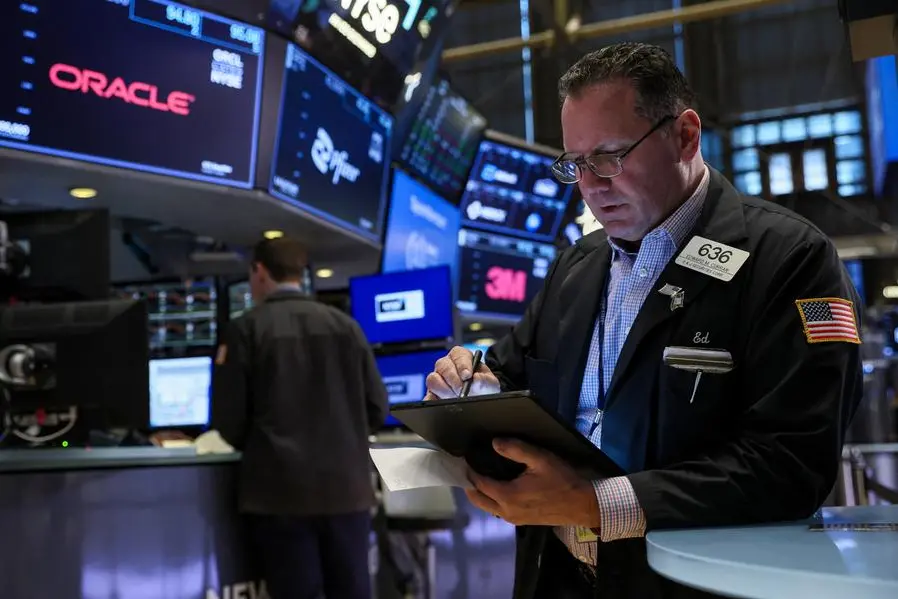PHOTO
LONDON - Growing wealth inequality and rise of the digital economy may well have combined to undermine the entire banking system - in an intriguing connection that potentially helps tie up some loose ends in world markets.
Many investment strategists have for years seen the ebb and flow of world liquidity as critical to value of stocks and bonds - dictated mostly by central bank policies, including direct infusions or subtractions via buying and selling of assets.
Indeed, many believe a reason for stock markets' peculiar levity in the face of rising interest rates and recession fears over the past couple of months is at least partly related to this, as the Federal Reserve was forced to expand its balance sheet again to stanch the March U.S. bank runs.
And, as it's global liquidity that matters, the bowl is also kept brimming as the Bank of Japan continues to buy government bonds at pace.
But the bigger liquidity picture in all of this has been long-running analysis of what former Fed chair Ben Bernanke in 2005 dubbed the 'global savings glut' - rising surplus savings from China and other developing nations over the past 25 years as well as pre-retirement hoarding in ageing rich countries.
The gist of the thesis is this pool of worldwide savings seeking 'safe' assets found its way into western markets, depressing government bond yields and borrowing rates, compressing credit spreads and lifting stock prices generally.
But a study looking at the U.S. banking shock that led to the failure of Silicon Valley Bank and Signature Bank last month and deposit runs across many regional banks suggests a different angle - a 'deposit glut' from within the richest countries that is increasingly unstable.
In a paper published by the Centre for Economic Policy Research, Guillaume Vuillemey at HEC Paris details how U.S. banks locally exposed to high-saving 'intangible-intensive' or digital firms - and related household wealth inequality where the richest tend to hold outsize savings in cash - led to "unprecedented" deposit-to-GDP ratios by 2022 and an explosion in deposits above $250,000 insurance thresholds.
The paper shows how over the past 23 years the ratio of deposits to total bank liabilities rose to 75% from 55%, lifting the overall U.S. deposits-to-GDP ratio to a record 75% in the process.
But the share of uninsured deposits to total bank deposits and equity almost doubled to more than 35% in that time and analysis of last month's market contagion showed the extent of other banks' stock reactions to the stress correlated clearly with the size of that uninsured deposit exposure.
"In a context of rising wealth inequality and growing corporate savings, an increasing share of bank deposits is uninsured and held by sophisticated agents," Vuillemey wrote. "This implies that these deposits are increasingly fragile, and that deposit insurance schemes ... are slowly losing bite."
BUCKLE UP, OR WATCH INFLATION?
As illustrated in Technicolor in the SVB run, big uninsured deposits are volatile - sensitive as they are to any hint on the bank's health and moveable at push of a button. Expanding public insurance to cover these may be considered, Vuillemey's paper said, but this comes with significant moral hazard around why concentrated wealth should be underwritten at wider cost anyway.
But if expanded insurance to all deposits is not an answer to that instability, and more regulation doesn't resolve it, the upshot - as per the half trillion dollars of deposits that fled to money market funds since February - may just be a migration of this "deposit glut' to government securities anyhow.
For many market strategists looking at the overall impact of these episodes, this just bring everything back to monitoring the pool of global liquidity - and deciding whether the outsize crush into government-invested money funds has already peaked or is only beginning.
And on that, you have to pick your models and blizzard of variables.
Citi strategist Matt King remains convinced the net $1 trillion in aggregate liquidity injected by global central banks into the system so far this year is the main reason world stocks, bonds and credit spreads have been so well behaved.
But he's equally convinced that up to $800 billion of that is about to reverse - in part due to the complex Treasury and Fed accounting surrounding the debt ceiling standoff, partly due to less need for Chinese monetary easing and partly due to greater liquidity tightening from the European Central Bank. "Keep watching the liquidity data – and buckle up," King told clients last week.
And yet global liquidity specialists at Michael Howell's CrossBorder Capitial are similarly adamant the worst of the liquidity squeeze that so damaged world stocks and bonds last year has passed and a new cycle is already well underway.
CrossBorder argues that central banks have made a decision to separate financial stability from monetary policy and would continue to ensure ample liquidity for the former even if interest rates had further to rise.
What's more, it reckons that even if an economic downturn is under way, falling inflation expectations - that matter most for asset pricing - typically drop that faster than output expectations and that releases more liquidity into the economy.
"Before bailing out of stocks, fearful investors should dig-deeper into the inflation data for reassuring signs of improvement," it concluded. "Inflation matters."
The opinions expressed here are those of the author, a columnist for Reuters.
(by Mike Dolan, Twitter: @reutersMikeD.)





















